According to the report of Lam Dong Department of Health , the whole province currently has dozens of general and specialized hospitals at the provincial level, 29 regional health centers (TTYT) and more than 120 commune and ward health stations, along with thousands of private health facilities. This is a widespread health system that regularly generates large amounts of medical waste, requiring a strict, unified and highly preventative management mechanism.
In recent years, most provincial hospitals and regional health centers have invested in centralized wastewater treatment systems. The treatment facilities all apply biological technology combined with disinfection before discharge into the environment, ensuring compliance with national technical regulations. From 2021 to 2025, the total amount of medical wastewater generated in the province will reach more than 2.9 million m³, of which up to 98.82% will be treated to standards before being discharged into the environment.
For medical solid waste, classification and collection activities are carried out in accordance with regulations. The amount of hazardous medical waste, up to more than 11.3 million tons, is 100% treated according to standards. Ordinary medical waste, with a total amount of more than 18.7 million tons in the above period, is also classified at the source and contracts are signed with urban environmental units for collection, transportation and treatment according to the correct procedures. Recycled waste is stored separately and transferred to units with recycling business licenses according to the law.
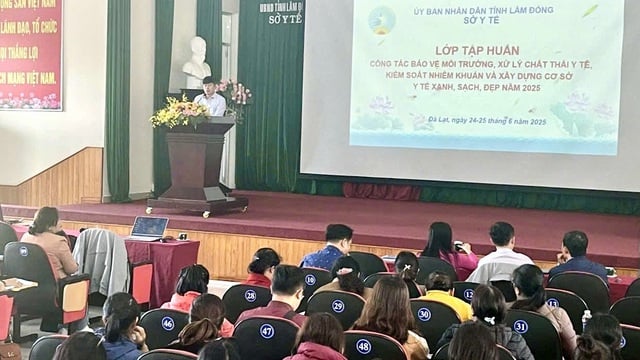
Lam Dong Department of Health deploys a training plan on environmental protection, medical waste treatment, infection control and building green, clean and beautiful medical facilities by 2025.
In hospitals and health centers, hazardous waste is collected and stored in specialized warehouses, then transferred to legal entities for treatment, avoiding prolonged backlog or dispersion into the surrounding environment. Waste management is integrated into internal inspection and periodic monitoring activities, in order to promptly detect errors, especially in the operation of wastewater treatment systems and solid waste treatment equipment.
Along with professional work, the movement to reduce plastic waste in healthcare has been widely deployed. Hospitals and medical centers in the area signed a commitment to reduce the use of disposable plastic, prioritize environmentally friendly materials and gradually replace products that are difficult to decompose. This activity is associated with the movement "Building Green - Clean - Beautiful healthcare facilities", which has received strong response from medical staff, patients and their families. Many units have arranged green campuses, increased periodic cleaning, contributing to improving the image and quality of healthcare services.
Mr. Le Van Hong - Deputy Director of Lam Dong Provincial Department of Health said that the health sector continues to direct units to maintain and replicate the environmental sanitation model associated with the criteria of "Green - Clean - Beautiful". These requirements aim to ensure that waste classification at source is strictly implemented, in accordance with regulations for both medical waste and domestic waste.
Strengthening medical waste management within the medical facility premises
In order to strengthen the management of medical waste within the medical facility premises, on July 29, Lam Dong Department of Health issued Document No. 380/SYT-NVY requesting health units in the industry to effectively implement the following contents:
Strictly implement regulations on medical waste management according to the Law on Environmental Protection; Government Decree detailing a number of articles of the Law on Environmental Protection; Circular of the Ministry of Health regulating medical waste management within the premises of medical facilities... and related professional documents and instructions.
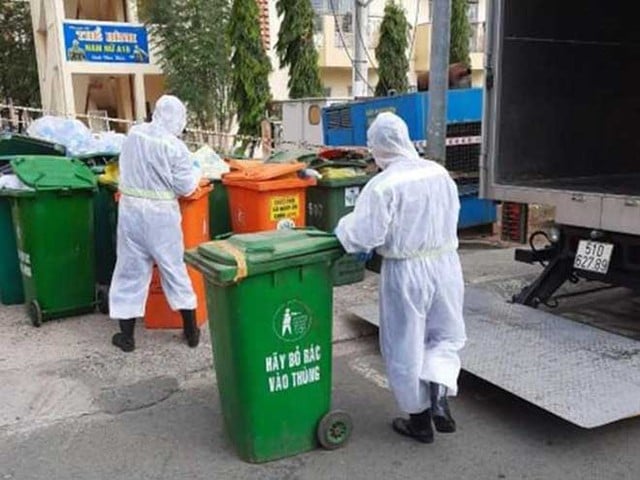
Lam Dong Provincial Department of Health requires units to strengthen medical waste management within the premises of medical facilities. Illustrative photo.
Review and overcome shortcomings in medical waste management; assess the current status of the medical wastewater treatment system. In cases where there is no medical wastewater treatment system or the system is overloaded or degraded, there must be a new investment plan or renovation and upgrading plan to ensure that medical wastewater treatment meets environmental technical standards before discharge; strengthen management, monitoring and supervision of the operation of medical wastewater treatment works/systems, works/equipment for treating medical solid waste and medical wastewater, and post-treatment medical waste.
Have plans, measures, and equipment to prevent and respond to environmental incidents caused by waste according to the provisions of law; Organize training, coaching, and communication to raise awareness of medical waste management for all cadres, civil servants, public employees, contractors, and other relevant subjects and implement a reporting regime on medical waste management results to ensure accuracy and timeliness according to regulations.
Regularly self-check and monitor the implementation of environmental protection regulations at the unit, resolutely and strictly handle violations. Immediately implement measures to overcome existing problems in medical waste management that have been recommended and proposed by the Inspection and Examination Teams (if any).
Review the current status of the medical waste treatment system at the unit (liquid waste, solid medical waste at provincial, regional and commune level units), assign the Medical Centers of the regions and special zones to report the current status of the unit and the communes, wards and special zones under their management.
See more articles of interest:
Source: https://suckhoedoisong.vn/lam-dong-tang-cuong-cong-tac-quan-ly-chat-thai-y-te-169251123165702367.htm






![[Photo] Next to the "mountain of trash" after the flood, Tuy Hoa residents strive to rebuild their lives](/_next/image?url=https%3A%2F%2Fvphoto.vietnam.vn%2Fthumb%2F1200x675%2Fvietnam%2Fresource%2FIMAGE%2F2025%2F11%2F24%2F1763951389752_image-1-jpg.webp&w=3840&q=75)

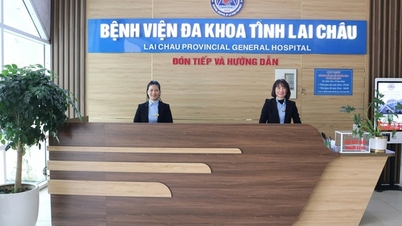
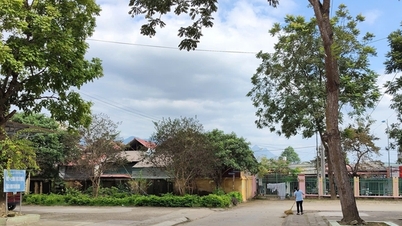













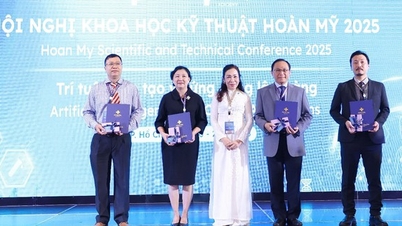















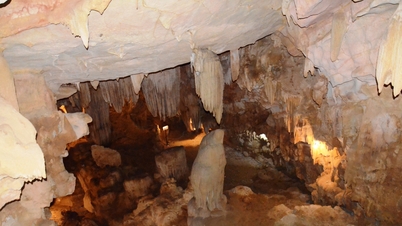








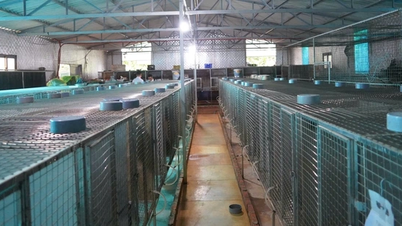







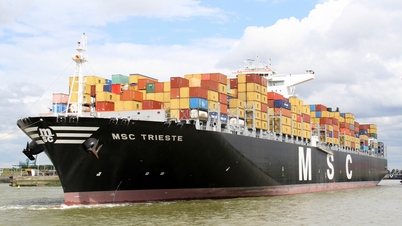

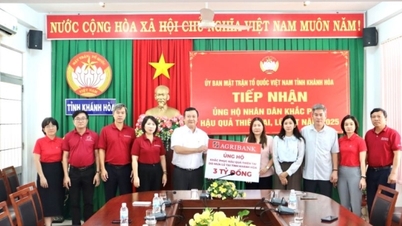











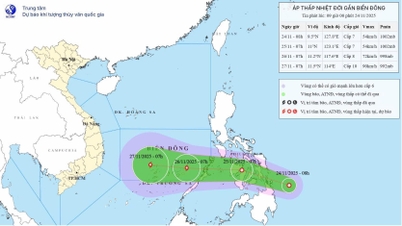














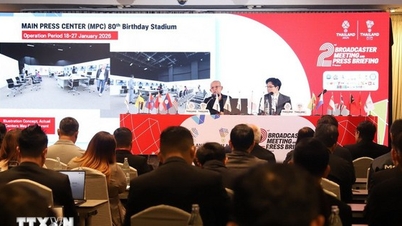
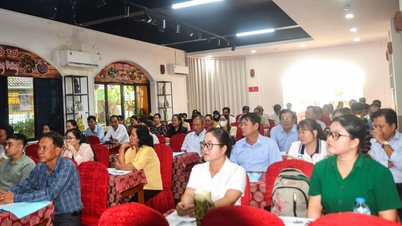



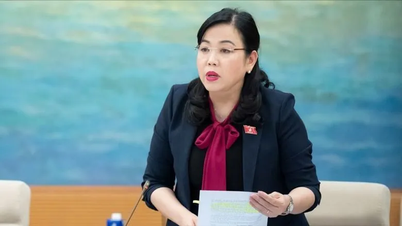
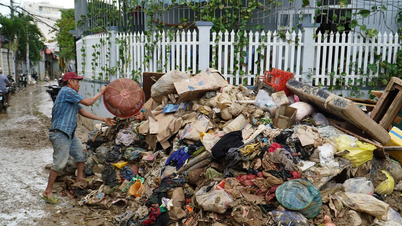

















Comment (0)